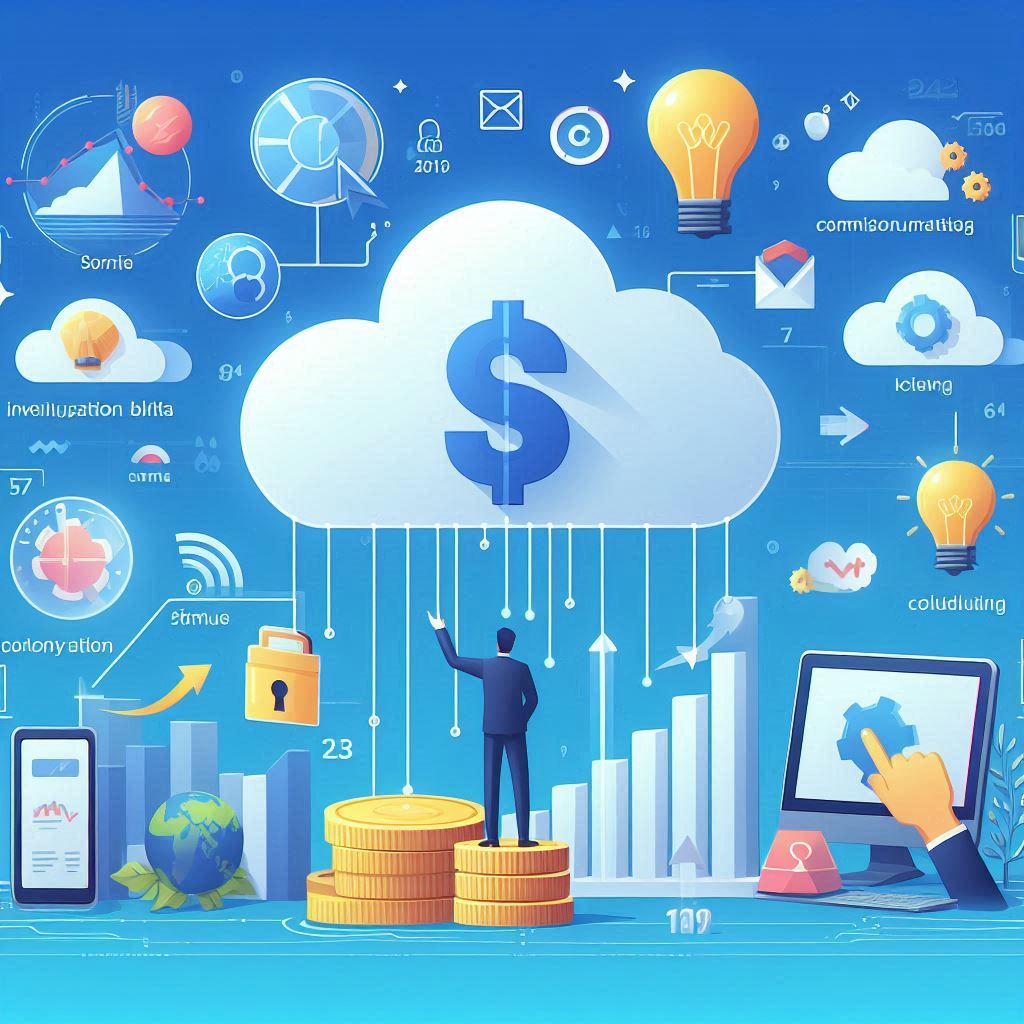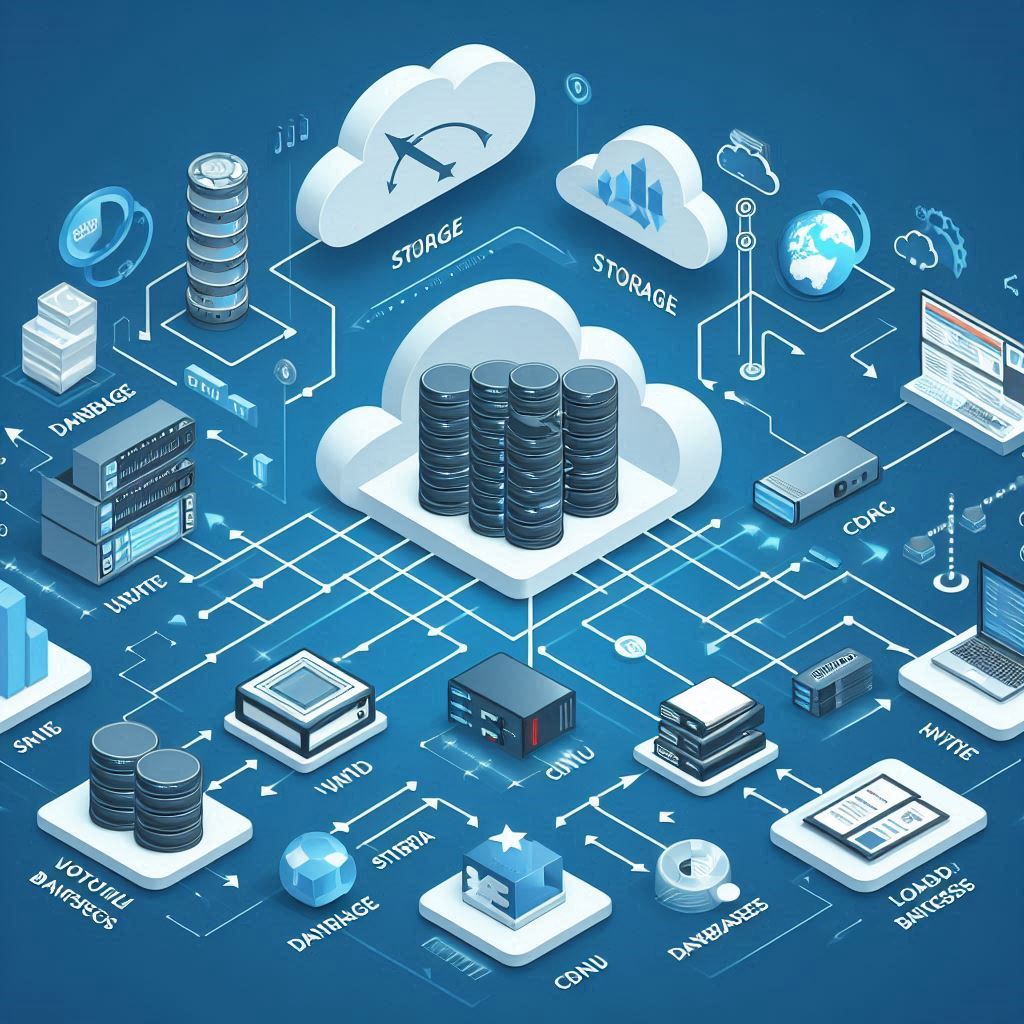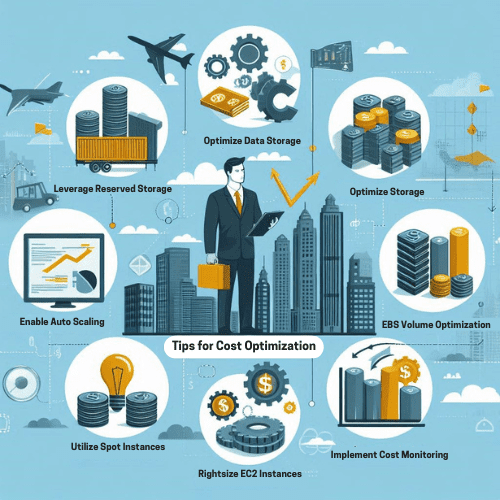Cloud Costs Reduction Solutions: How to Optimize and Save Money?

Introduction
As cloud infrastructure becomes the backbone of modern applications, understanding the associated costs is vital for businesses of all sizes. With cloud expenses varying greatly, it’s essential to grasp the financial implications before making an investment. This in-depth guide will demystify cloud costs, exploring:
- Pricing models and their implications
- Key cost components and optimization strategies
- Measuring return on investment (ROI) and achieving cost efficiency
Get ready to make informed decisions and navigate the cloud cost landscape with confidence.
Cloud Pricing Models: A Comprehensive Overview

In the evolving landscape of cloud computing, a variety of pricing models are designed to cater to diverse business needs and budgets. Whether you’re running a small startup or managing a large enterprise, understanding these options is crucial for optimizing your cloud investment. Let’s explore the key pricing models available:
Core Pricing Models
- Pay-As-You-Go (PAYG):
- Overview: PAYG offers maximum flexibility, allowing you to pay only for the resources you consume, with no upfront commitments.
- Ideal For: Unpredictable workloads and testing environments where demand can fluctuate.
- Additional Consideration: PAYG is also ideal for projects in the development or testing phase, where resource usage is not yet stable.
- Reserved Instances (RIs):
- Overview: Reserved Instances provide significant discounts by committing to a specific instance type for a one or three-year term.
- Ideal For: Workloads with consistent usage patterns, where predictable demand allows for long-term commitment.
- Additional Consideration: RIs are best utilized in production environments where performance and uptime are critical.
- Savings Plans:
- Overview: Savings Plans offer more flexibility than RIs, providing discounts on compute or database usage based on a committed spending amount over one or three years.
- Ideal For: Businesses seeking cost savings with flexibility across different instance types and services.
- Additional Consideration: Savings Plans can be a strategic choice for organizations that anticipate growth or changes in their cloud infrastructure over time.
- Subscription-Based:
- Overview: This model involves paying a recurring fee for access to cloud services, often structured with tiered pricing based on usage levels.
- Ideal For: Regular, predictable workloads with a need for continuous access to specific services.
- Additional Consideration: Subscription-based pricing is commonly used for software-as-a-service (SaaS) offerings, where continuous service delivery is essential.
Additional Pricing Models
- Usage-Based:
- Overview: You pay based on specific metrics such as data transfer, storage, or API calls.
- Ideal For: Applications with clear, measurable usage patterns where costs are directly tied to activity.
- Additional Consideration: Usage-based models are particularly effective for microservices architectures, where different components of an application may have varying resource needs.
- Tiered Pricing:
- Overview: This model offers different price points based on usage levels, with discounts applied as usage increases.
- Ideal For: Businesses that experience scaling, as it rewards higher usage with lower per-unit costs.
- Additional Consideration: Tiered pricing is advantageous for businesses that anticipate significant growth, as it can lead to substantial savings over time.
- Spot Instances:
- Overview: Spot Instances provide significant savings by allowing you to bid on unused compute capacity, though these instances can be interrupted.
- Ideal For: Fault-tolerant workloads that can handle interruptions, such as batch processing or data analysis.
- Additional Consideration: Spot Instances are excellent for big data processing or machine learning tasks, where jobs can be paused and resumed without impacting the overall outcome.
- Dedicated Hosting:
- Overview: Dedicated Hosting offers dedicated physical servers or instances for a fixed term, providing a higher level of control at a premium cost.
- Ideal For: Workloads requiring specific compliance or security measures, where exclusive access to hardware is necessary.
- Additional Consideration: Dedicated hosting is also beneficial for legacy applications that require specific hardware configurations.
- Hybrid Pricing:
- Overview: Many cloud providers offer hybrid models, combining different pricing options to optimize costs for complex workloads.
- Ideal For: Organizations with diverse needs, seeking to balance flexibility, cost savings, and control.
- Additional Consideration: Hybrid pricing is particularly useful for organizations transitioning to the cloud, as it allows them to gradually shift workloads while optimizing costs.
Making the Right Choice
Choosing the optimal pricing model requires a deep understanding of your workload characteristics, budget constraints, and risk tolerance. By carefully analyzing your usage patterns and leveraging cost optimization tools, you can effectively manage cloud expenses and maximize the value of your cloud investment. Additionally, it’s important to regularly review your pricing model as your business evolves, ensuring that you’re always getting the best possible value from your cloud provider.
Key Factors Influencing Cloud Costs and Pricing

The cost of cloud computing is shaped by several factors, each playing a critical role in determining the overall budget for a successful deployment. Understanding these factors is essential for businesses to accurately estimate their investment and plan effectively. Below are the primary elements that impact cloud pricing:
1) Application Type and Its Impact on Cloud Costs
- Overview: The type of application—whether it’s a web app, mobile app, or data processing system—dictates the resources required for deployment and operation.
- Impact on Cost: Applications with complex processing needs or high-performance requirements typically demand more expensive resources.
2) Workload
- Overview: Workload refers to the expected traffic, data volume, and compute power needed to run the application.
- Impact on Cost: Higher traffic and larger data volumes increase the need for computing, storage, and network resources, leading to higher costs.
3) Scalability
- Overview: Scalability is the ability to adjust resources up or down based on demand.
- Impact on Cost: While scalability allows for cost efficiency by matching resources to demand, the costs can fluctuate significantly during peak usage periods.
4) AWS Services
- Overview: The selection of AWS services—such as EC2 for computing, Lambda for serverless functions, S3 for storage, and RDS for databases—directly influences pricing.
- Impact on Cost: The specific services you choose, along with their configurations, will significantly affect your overall cloud expenses.
5) Optimization Strategies for Reducing Cloud Costs
- Overview: Implementing cost-saving measures, such as using reserved instances, spot instances, and auto-scaling, can help manage and reduce costs.
- Impact on Cost: Effective optimization can lead to substantial savings, making cloud deployments more cost-efficient.
By considering these factors, businesses can better predict their cloud costs and implement strategies to optimize spending. Careful planning and ongoing cost management are essential to maximizing the value of your cloud investment.
Breaking Down Application Sizes to Manage Cloud Costs

When planning cloud deployments, it’s helpful to categorize applications into different sizes based on their traffic, functionality, and data storage needs. For the purpose of this discussion, we’ll classify applications into three sizes:
Small Applications
- Characteristics: Low to medium traffic, basic functionalities, and limited data storage.
- Examples: Personal blogs, small business websites, and simple web apps.
- Typical Use Case: Ideal for projects with minimal resource requirements and straightforward user interactions.
Medium Applications
- Characteristics: Moderate traffic, more complex functionalities, and growing data storage needs.
- Examples: E-commerce websites, SaaS platforms, corporate websites.
- Typical Use Case: Suitable for businesses that require a balanced approach between performance and resource allocation, with the ability to scale as demand increases.
Large Applications
- Characteristics: High traffic, highly complex applications, extensive data processing, and large-scale storage requirements.
- Examples: Large-scale enterprise platforms, social media sites, big data analytics, gaming platforms.
- Typical Use Case: Designed for organizations needing robust infrastructure to support significant user engagement, data-intensive operations, and advanced functionality.
Cost Components in Cloud Computing

No matter the size of your application, certain cost components are common across cloud computing platforms. These components contribute to the overall expenditure and are essential for planning and managing your cloud budget effectively. Here are the key cost components:
1) Compute
- Overview: Compute costs arise from the resources used to run applications, including virtual machines, serverless functions, and containerized workloads.
- Examples: Virtual machines (VMs), serverless functions, and container services.
2) Storage
- Overview: Storage costs involve the space required to store data, files, and backups, as well as associated retrieval operations.
- Examples: Object storage, block storage, and file storage.
3) Database
- Overview: Database costs cover managed database services that handle data storage, querying, and transactions.
- Examples: Relational databases, NoSQL databases, data warehouses.
4) Networking
- Overview: Networking costs include the resources needed for data transfer, domain name resolution, and load balancing across different regions and services.
- Examples: Virtual networks, load balancers, and domain name services.
5) Content Delivery
- Overview: Content delivery costs are associated with services that distribute content globally, ensuring low-latency access for users.
- Examples: Content delivery networks (CDNs).
6) Monitoring and Logging
- Overview: Monitoring and logging costs arise from tools that track performance, log activity, and provide insights for troubleshooting and optimization.
- Examples: Monitoring services, logging and auditing tools.
7) Additional Services
- Overview: These costs depend on specific application requirements and can include a wide range of services, from security to analytics and machine learning.
- Examples: Security services, analytics platforms, AI/ML tools.
Cost Estimation Challenges

Accurately estimating cloud costs can be challenging due to the wide range of variables involved. While providing exact figures is difficult, we can offer general estimates based on common application sizes:
1) Small Application
- Estimated Cost: $500 – $2,000/month
- Overview: This range typically covers low to medium-traffic applications with basic functionalities and limited data storage.
2) Medium Application
- Estimated Cost: $2,000 – $10,000/month
- Overview: Costs increase for applications with moderate traffic, more complex functionalities, and growing data storage needs.
3) Large Application
- Estimated Cost: $10,000+/month
- Overview: Large applications with high traffic, extensive data processing, and advanced features can incur costs exceeding $10,000 per month.
These estimates are based on general assumptions and can vary significantly.
Tips for Cost Optimization

To minimize costs in cloud computing, consider the following strategies:
1) Rightsizing Resources
Overview: Select appropriately sized resources to match your workload, ensuring you’re not overpaying for underutilized capacity.
2) Leverage Reserved Resources
Overview: For workloads with consistent usage patterns, consider reserving resources to benefit from lower, long-term rates.
3) Utilize Spot Resources
Overview: For fault-tolerant workloads, explore spot resources or similar offerings that allow you to take advantage of unused capacity at a lower cost.
4) Optimize Storage
Overview: Use the most appropriate storage tiers for your data, balancing cost with performance and access needs (e.g., frequent vs. infrequent access).
5) Implement Cost Monitoring
Overview: Continuously track usage and expenses with cost monitoring tools, helping you identify and act on optimization opportunities.
Conclusion

Estimating cloud computing costs requires a deep understanding of your specific application requirements and usage patterns. While general estimates can offer a helpful starting point, it’s essential to use cloud cost calculators and conduct thorough analyses to achieve accurate projections. By carefully considering the factors that influence costs and implementing effective cost-saving strategies, organizations can optimize their cloud spending while ensuring the desired performance and scalability of their applications.
If you require help with estimating and budgeting for cloud costs, reach out to our team. Our specialists will offer a consultation tailored to your company’s specific requirements and budget.
Disclaimer: Providing exact average costs for running small, medium, and large applications on AWS is challenging due to numerous variables. Factors like application complexity, workload, usage patterns, and optimization strategies significantly impact the final cost. This article aims to provide a general overview and guidelines for estimating costs.